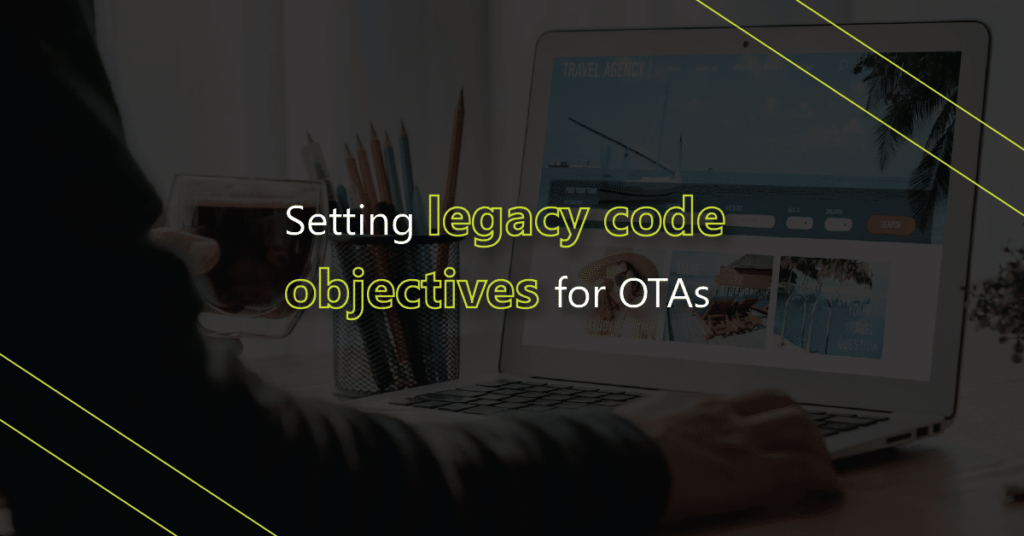Online travel agencies understand the need for modernization as they constantly face the pressure to scale and innovate to outpace current competition and new entrants. And it’s not easy because a lot of OTAs rely on the experience of tech providers which complements internal expertise.
Addressing legacy code is a critical block of this puzzle, and to solve this OTAs must set objectives of legacy code because not everything is redundant. OTAs must understand that before they label a code as ‘legacy’, it was generating functional and commercial value for the company, and many of these systems still provide considerable value today. Deciding what was legacy and what had to be transformed is the most important part of determining the priorities of legacy codes. Here we look at the “hows” of this in detail. Evaluating Operational CostsUnderstanding the financial implications of maintaining legacy systems is paramount. Questions surrounding infrastructure costs, engineering time, reliability, and scalability comparisons to modern systems form the foundation of this evaluation. Read More – Navigating Airline Relationships as an OTAAssessing Engineering Resources and Skills Identifying documentation availability, skill gaps, and the balance of engineering time between maintenance and new development sheds light on the human aspect of legacy code transformation. Gauging Business ValueLegacy systems may be aged, but their contribution to revenue streams can’t be dismissed. Assessing their revenue generation capabilities, compatibility with service level agreements (SLAs), and understanding technical dependencies is crucial for informed decision-making. Approaches to Addressing Legacy CodeIn determining the most suitable approaches, various factors such as development costs, long-term strategy, and modernization speed come into play. The spectrum of tactics includes retaining through API encapsulation, refactoring, revising, rebuilding, replacing, re-platforming, integrating off-the-shelf software, and building new solutions. Legacy Code and Technical Debt DriversIdentifying the drivers behind legacy code accumulation is essential. Factors like outdated technology stacks, high infrastructure costs, and lack of automation contribute to technical debt. Successfully transforming legacy code goes beyond technical solutions; it requires a holistic approach encompassing Team, Trust, and Tech. Investing in upskilling engineers and providing them with the necessary training ensures alignment with modern engineering practices. Collaborations with external vendors and creating specialized teams foster a culture of learning and expertise sharing. Building robust governance structures, documentation practices, and decision-making committees streamlines the modernization journey and builds trust. Adhering to compliance standards like PCI DSS ensures data security throughout the process. Equipping teams with the right tools and technologies, such as CI/CD pipelines and architecture patterns like Pub/Sub and Event Sourcing, enhances system observability, consistency, and scalability. Setting objectives for transforming legacy code in OTAs requires a balanced approach that acknowledges historical value, evaluates current realities, and aligns with future business goals. And simply trying to eliminate the incumbent code terming “legacy” may not make a lot of business sense.
Vervotech is a leading Hotel Mapping and Room Mapping API that leverages the power of AI and ML to quickly and accurately identify each property listing through the verification of multiple parameters. With One of the industry’s best coverage of 98% and an accuracy of 99.999%, Vervotech is quickly becoming the mapping software of choice for all leading global companies operating in the travel and hospitality industry. To learn more about Vervotech and the ways it can enhance your business in the long run contact us: sales@vervotech.com








